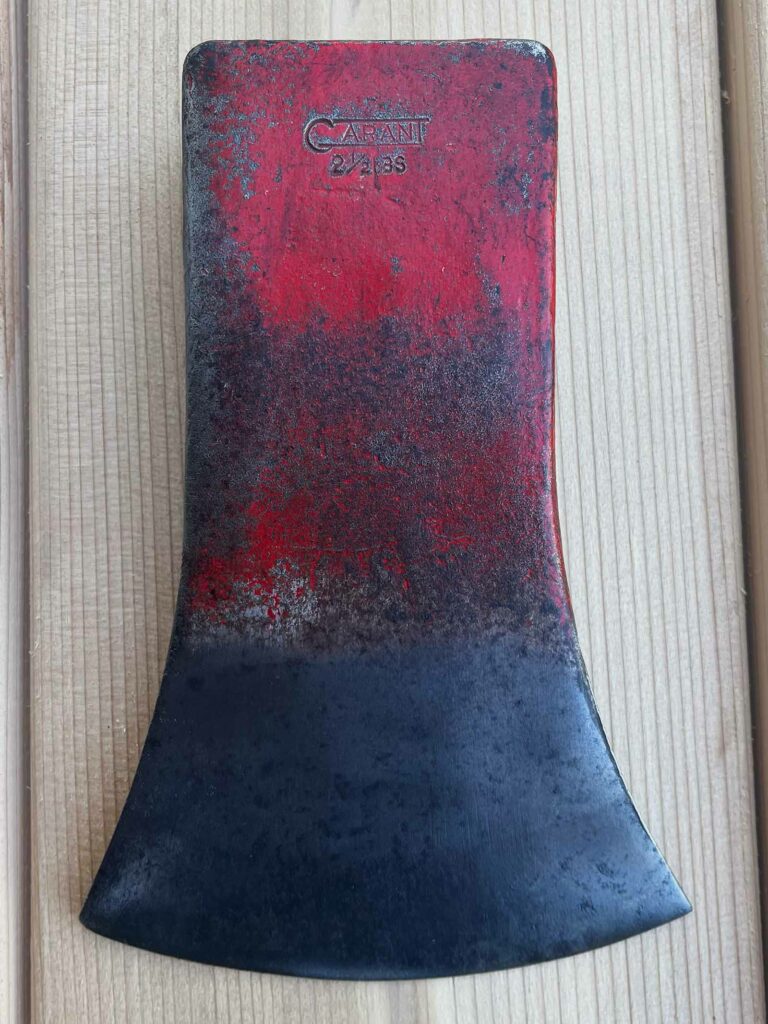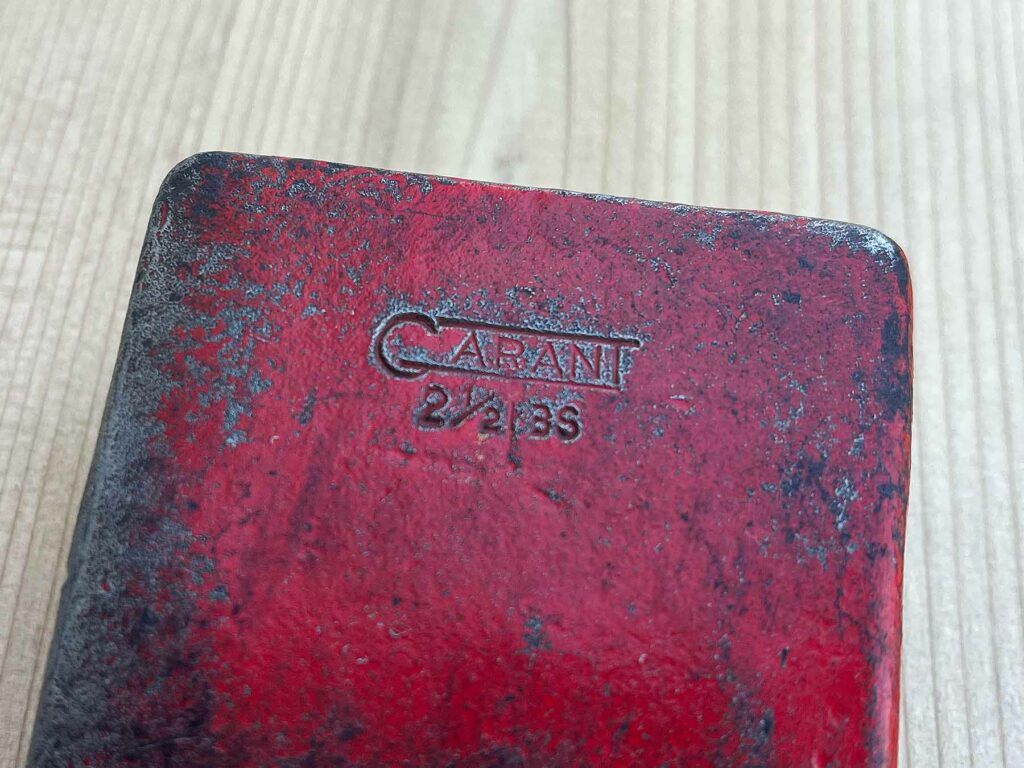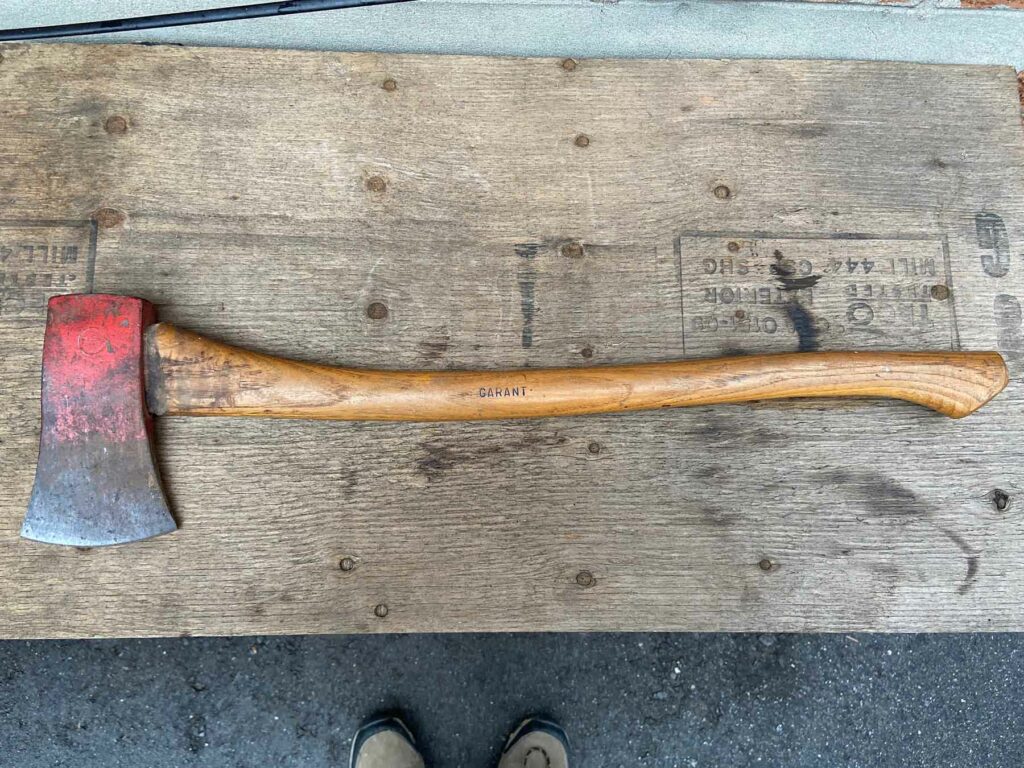A History of Garant Axes
1966 – Present
Imported
Garant is a well-known name in Canada – and Garant axes and tools can still be found on the shelves today. However, it might surprise you that they may never have made axe heads in Canada.
In 1895 Télesphore Garant started as a town blacksmith in the village of Saint-François-de-la-Rivière du Sud, forging and repairing farm implements. He moved his family to the US from 1906-1914 but returned with his son Alphonse (and their families) after the outbreak of the First World War.
While Télesphore resumed working at his forge. Alphonse worked as a machinist making munitions for the war at Usines Générales de Chars et de Machineries Limitée in Montmagny. (This factory would briefly go on to make axes after the war as well before falling into ruin – see the “National Axe”).
After the First World War Alphonse invented a copy lathe that could quickly produce carriage wheels and tool handles (including axes). While carriage wheels were the original focus, they weren’t needed after WW2 and in 1945 the company switched their lathes to focus entirely on making tool handles.
It wasn’t until the mid-1950s that Garant started selling complete tools – starting with shovels. Axes started in 1966, combining imported axes heads with Canadian-made Garant handles.
Difficulty Dating Garant Axes
Unfortunately, it’s quite hard to date Garant axes as many weren’t stamped, there isn’t much documentation of changes, and they largely used the same paper label design for around 40 years.
It’s safe to assume Garant did not start selling complete axes until 1966, as the company only incorporated in 1965 – and no axes have been observed with the previous name of “Garant & Sons”. The earliest labels also list their office in Montmagny, Quebec which they moved to around the same time.
(The same city Alphonse worked as a machinist during the first world war)
There are a couple of different head stamps you can find, and different handle markings that can suggest a loose timeframe (generally the simpler the newer). But, it’s hard to pin down.
Early Swedish-made Garant Axes
The first Garant axes were rolled out in 1966, after reorganizing into a corporation (1965). The heads were ordered from the famous Swedish axe maker Hults Bruk and sent to Canada and hung on Canadian-made handles. The original axes had no branding stamp, just a paper label.
There is an example from Hults Bruk’s archive (seen here), which has an additional tag describing the order details on the back. Roughly translated to: Made May 19, 1966 – Ordered 10,000 at a time. Must match these specifications exactly.
It is unclear how long Garant was partnered with Hults Bruk before switching to a US manufacturer.
American-made Garant Axes
It was likely sometime in the 70s as the broader axe market was well into collapsing that Garant switched to a much closer (and likely cheaper) supplier in the US. These heads were also sent to Canada to be hung on Canadian-made handles.
The only confirmed producer was the Woodings Verona Tool Company out of Pittsburg, and I suspect based on evidence in the axes themselves that this was the only US supplier.
However, there were still multiple choices in the US for axe production, and they may have switched between them over the years – the conclusions I have made are a best guess based on observations of axe heads.
Stamped Garant Axes
You can find Garant axes stamped with a detailed corporate logo on the pole that were likely the first version of the American-made axes.
This logo mark was only registered for a trademark in 1986, but documents from Garant suggest it was in use since incorporation.
Simple-Stamp Garant Axes
The more recent stamped US-made Garant axe heads have a simple text stamp of “GARANT” on the pole without being stylized. The simplified stamp was likely done to save money, and these simple text-stamped Garant axes were likely from the 80s and/or 90s.
Circle-Marked Garant Axes
Later Garant axes without a text mark can still be identified by a circular production mark on either side of the head. It’s unclear why that mark is there, but it was a common feature seen on Woodings Verona axes made between 1997-2004. These later US-made axe heads are still believed to have hung on Canadian-made handles.
When the plant eventually shut down, axe production was moved to China.
Chinese-Made Garant Axes
Since around 2004 Garant axe heads have been made in China, and are stamped as such on the underside of the pole. The handles are now produced in Mexico, but the pieces are assembled in Canada.
I have a small review of modern Garant axes here.
Help the site grow!
Did I get something wrong? Do you have one of these axes? Please share any pictures, information, or insights to help fill the archive. You can email: museum@axeandtool.com




